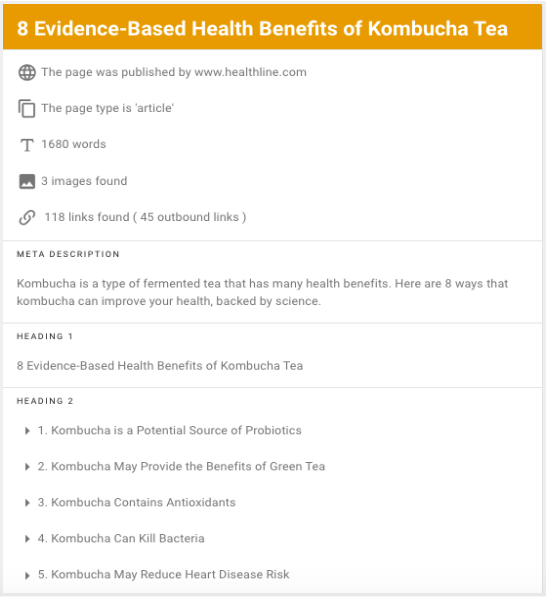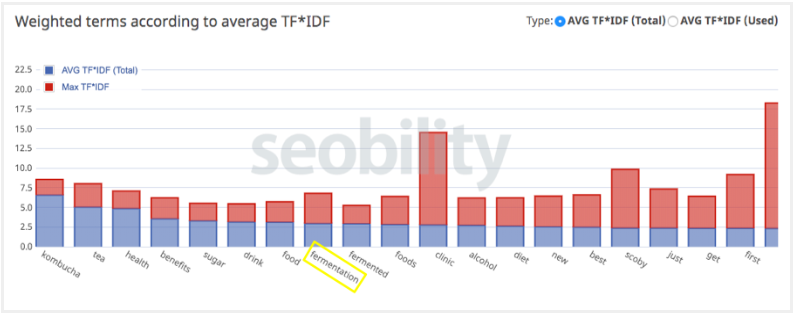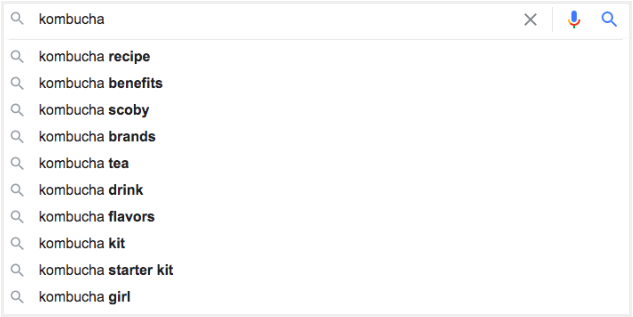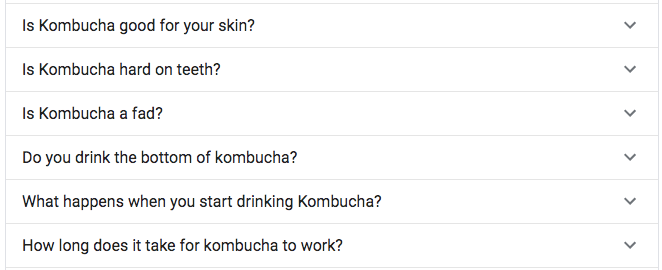First things first, I am going to promise you that this is not another post about including your target keyword in heading tags.
In this article, I will cover the main tactics I use to write this content, which helped an ecommerce retail client grow their organic traffic +202% Y/Y.
To create satisfying and comprehensive content Google is looking for, you have to put in real effort. But it can be challenging to know where to start.
This 3-step process includes:
1. Find Your “Gimme” Keywords 2. 4 Free Content Analysis Tools 3. Source Authoritative InputNow let's see how each of these steps work.
1. Find Your “Gimme” Keywords
In golf, a “gimme” is a shot that other players agree can count automatically — basically, a near-guaranteed victory. We can apply similar logic to keyword research by targeting keywords your organic competitors rank well for, but you could write about better.
Here is how to create a list of “gimme” keywords to influence your new content:
Go to Semrush .Trends tools and then the Keyword Gap tool.
Plug in your root domain and click Add Competitor — your top 4 organic competitors will autofill. Choose the first result and click "Compare".
To only view keywords in the top 10 results, select Position > Competitors > Top 10. You can also filter Volume to only see keywords above or below a specific search volume.
Scroll down to All Keyword Details and select “Missing” to see the list of keywords you don’t rank for, but your competitor is ranking #1-10.
Document keywords by adding them to your Keyword Manager, or exporting to Excel or CSV.

Complete this analysis with several of your close competitors until you have a list of keywords you feel confident in. This list is a great starting point, but there is one more crucial step in determining a true “gimme” keyword — looking at the search engine results pages (SERPs) manually.
Google’s algorithm prioritizes relevancy, so you need to make sure your site’s content and expertise will make sense for each keyword.
Starting with your highest-priority keywords, do an incognito Google search on desktop (Ctrl or ⌘ + Shift + n) and mobile. You can also use Mobile Moxie’s awesome SERPerator tool to check mobile results from your desktop.
Analyze the first page of results by answering a few questions:
What Is the Keyword’s Intent?
Search intent is bucketed into 4 different types: informational, transactional, navigational, and commercial investigation. Before deciding to target a keyword, make sure your content matches what users are looking for. Determining intent in the SERPs is fairly straightforward:
Informational: Users are looking for generic information about a topic.
“What is kombucha?”
Transactional: Users are looking for categories or products.
“Kombucha kits”
Navigational: Users are looking for a specific website.
“Kombucha Retailer"
Commercial investigation: Users are in the research phase before purchasing.
“Kombucha reviews”
Sometimes, results can be mixed intent. For example, a search for just “kombucha” shows informational articles, a product feed, and a local map pack. In this case, it is up to you to determine if your content fits the intent.
If you’re not sure what the search intent is for a keyword, you can check the intent in Semrush. In the Keyword Magic Tool, for example, keyword intent is displayed in the second column of your results.

You can even filter keywords by intent if you only want to target specific ones. Save the ones you like to the Keyword Manager, or export all of your results to reference later.
You can find the Search Intent metric in the following tools:
Domain Overview Organic Research Keyword Overview Keyword Magic Tool Keyword Manager Keyword Gap Position TrackingWhich Publishers Are Ranking?
Take a look at the publishers ranking on the first page for your keyword. Would your website fit in alongside these results?
Say you are a food blogger interested in writing about the “benefits of kombucha.” Currently, the top 10 results showcase sites like Healthline, Medical News Today, and WebMD. Google is prioritizing authoritative health sites, not food blogs, to rank for this keyword.
Yet, search for “ginger kombucha”, and you will find a variety of food blogs dominating the SERPs. Though this keyword is lower volume than “benefits of kombucha”, you will be much more likely to rank.
What Does the On-Page Content Look Like?
Finally, click into the top 3-5 search results to analyze each page. The key sign of a “gimme” keyword is when the top results show missed opportunities. You can usually tell this just by skimming:
Does the page lack a sensible heading structure?
Is it difficult to read or flooded with ads and pop-ups?
Does the content seem too thin (or unnecessarily long)?
This technique may involve a bit more leg work on the front end, but you will avoid wasting countless hours targeting irrelevant or high-difficulty keywords.
If you have done your keyword research and the search landscape seems conquerable, go forth and conquer it.
2. 4 Free Content Analysis Tools
Once you have your list of “gimme” keywords, the next step is to look even closer at the first page of results to understand what content may be good to include.
However, this manual process can be time-consuming. These 4 free tools will streamline your analysis, so you can reinvest that time into writing great content:
1. Thruuu

This free SERP analyzer tool provides a faster way to analyze top-ranking content without having to read through each page. This tool shows the metadata and headings from the top search results for a keyword. You can even choose between desktop and mobile results.
Take special notice of topics covered across several competing pages. If specific sections keep popping up, you can assume you should also cover those to write more thorough content.
2. Seobility’s Free TF-IDF Tool
This free TF-IDF tool shows the most frequently used terms in the top 10 results, which helps you analyze the language used to describe this topic. Note: do not attempt to mimic the exact weighting of terms shown in this analysis, as there is no ranking benefit in doing so.
For example, you can see fermentation is a common term across “benefits of kombucha” articles; that topic may be worth diving into on your own page.

3. Dandelion’s Entity Extraction tool
This free entity extraction tool provides semantic topics — people, places, brands, and events — referenced in a document. Simply insert a competing article’s URL to discover the concepts referenced on the page.
For instance, “green tea” is a top concept in the #1 ranking page about kombucha. You could consider including information about kombucha made from green tea in your own article.
4. Google
Google’s own features — autosuggest and People Also Ask boxes — offer a great way to see what people are searching for related to your topic.
To use Google autosuggest, type the target keyword into Google, and see which searches pop up after the text. You should also click before the text for more searches.

In People Also Ask boxes, Google shares the most commonly asked questions around your keyword. This provides some excellent ideas for relevant content to cover in your article. And when you click on different queries, Google will add even more.

One thing to note: You do not need to include every piece of information you find in your topic research. As Google says:
The amount of content necessary for the page to be satisfying depends on the topic and purpose of the page. A high-quality page on a broad topic with a lot of available information will have more content than a high-quality page on a narrower topic.
Think about your users, and write with refinement. Balance the subtopics you find in your research with what is most important for your readers to know.
Finally, when it comes to competitive analysis, it is never a bad idea to reiterate that you should never plagiarize. Think of this research as inspiration, and use your brand’s writing style and authority to make it unique.
And speaking of authority, process step #3 is next.
3. Source Authoritative Input
The term E-A-T (which stands for Expertise, Authority, and Trust) is mentioned 135 times in the Quality Evaluator Guidelines. Needless to say, it is important.
Google explains that high E-A-T information is written by a person or organization with appropriate expertise. However, the standard for expertise depends on the page. Here is a handy chart to help you visualize how much E-A-T matters for different types of pages:

Source: Path Interactive
If you are not an expert on the topic you are writing about, here are some ideas to source this content:
Your company’s subject matter experts (SMEs). Using the information from your content analysis, create an SEO outline, and have your company’s SMEs fill it out. This provides the trustworthy content you need, while still giving you control over how the content is written. SMEs can be anyone from the customer service team to the company’s founder. If you are not sure, ask several different roles until you find the right fit.
Reach out to your audience. Sometimes, your own audience is the best authority on the topic. You can source user-generated content from prompts on email or social media, and use their ideas on your page.
Incorporate research from authoritative websites. It is perfectly acceptable to include trustworthy research from other sites. Outbound links can help users find out more about a topic and allow them to check your sources. Make sure your links are useful for readers and point to reputable sources.
Another aspect of demonstrating E-A-T is by clearly showing authorship. Add your SME as an author or reviewer on your page — this demonstrates to users and search engines that the content was approved by an authority on the topic.

For example, Joe’s bio page shows he is a dietitian with a Master's degree in nutrition and dietetics. Clearly, he is well-qualified to cover this topic.
Final Tip: Don’t forget to track your keyword positions. This allows you to monitor performance over time and demonstrate progress to relevant parties.
The Proof Is in the Traffic
An ecommerce retailer was struggling to drive organic traffic to their site. Their low-funnel, transactional keywords were highly competitive, so we targeted top and mid-funnel keywords and linked to product pages from there.
I used competitive analysis to identify ~10 relevant keywords that were decent volume and showed low competition in the SERPs. Then, I created outlines with the information gleaned from content analysis and had my client’s subject matter expert offer input.
Here are the results from the ~10 articles we created in 2019:

202% Y/Y increase in organic users.
36% Y/Y increase in organic product pageviews.
68% Y/Y increase in organic revenue.
As you can see, it took about 6 months to start seeing traction from our ongoing content creation. General consensus often places ranking time around the 6-month mark, so that is to be expected. Patience with SEO pays off.
Creating content this way is time-consuming, and honestly, it should be. If we expect the highest quality content for our own searches, then we have to be willing to put in the time to write it.
I hope these 3 steps help you level up your content creation, so you too can watch the organic traffic start flooding in.
Innovative SEO services
SEO is a patience game; no secret there. We`ll work with you to develop a Search strategy focused on producing increased traffic rankings in as early as 3-months.
A proven Allinclusive. SEO services for measuring, executing, and optimizing for Search Engine success. We say what we do and do what we say.
Our company as Semrush Agency Partner has designed a search engine optimization service that is both ethical and result-driven. We use the latest tools, strategies, and trends to help you move up in the search engines for the right keywords to get noticed by the right audience.
Today, you can schedule a Discovery call with us about your company needs.
Source:





